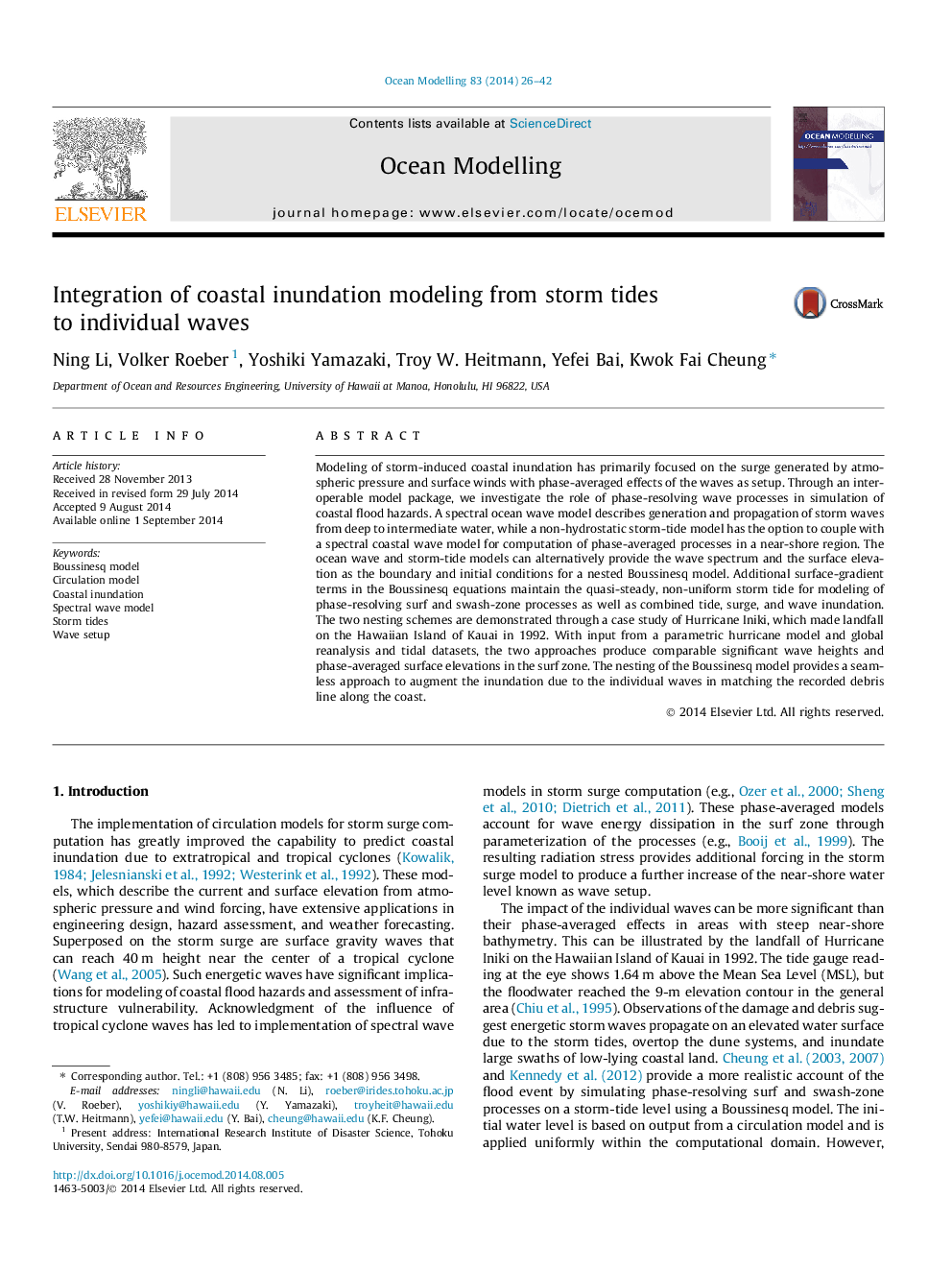| Article ID | Journal | Published Year | Pages | File Type |
|---|---|---|---|---|
| 6388176 | Ocean Modelling | 2014 | 17 Pages |
Abstract
Modeling of storm-induced coastal inundation has primarily focused on the surge generated by atmospheric pressure and surface winds with phase-averaged effects of the waves as setup. Through an interoperable model package, we investigate the role of phase-resolving wave processes in simulation of coastal flood hazards. A spectral ocean wave model describes generation and propagation of storm waves from deep to intermediate water, while a non-hydrostatic storm-tide model has the option to couple with a spectral coastal wave model for computation of phase-averaged processes in a near-shore region. The ocean wave and storm-tide models can alternatively provide the wave spectrum and the surface elevation as the boundary and initial conditions for a nested Boussinesq model. Additional surface-gradient terms in the Boussinesq equations maintain the quasi-steady, non-uniform storm tide for modeling of phase-resolving surf and swash-zone processes as well as combined tide, surge, and wave inundation. The two nesting schemes are demonstrated through a case study of Hurricane Iniki, which made landfall on the Hawaiian Island of Kauai in 1992. With input from a parametric hurricane model and global reanalysis and tidal datasets, the two approaches produce comparable significant wave heights and phase-averaged surface elevations in the surf zone. The nesting of the Boussinesq model provides a seamless approach to augment the inundation due to the individual waves in matching the recorded debris line along the coast.
Related Topics
Physical Sciences and Engineering
Earth and Planetary Sciences
Atmospheric Science
Authors
Ning Li, Volker Roeber, Yoshiki Yamazaki, Troy W. Heitmann, Yefei Bai, Kwok Fai Cheung,
